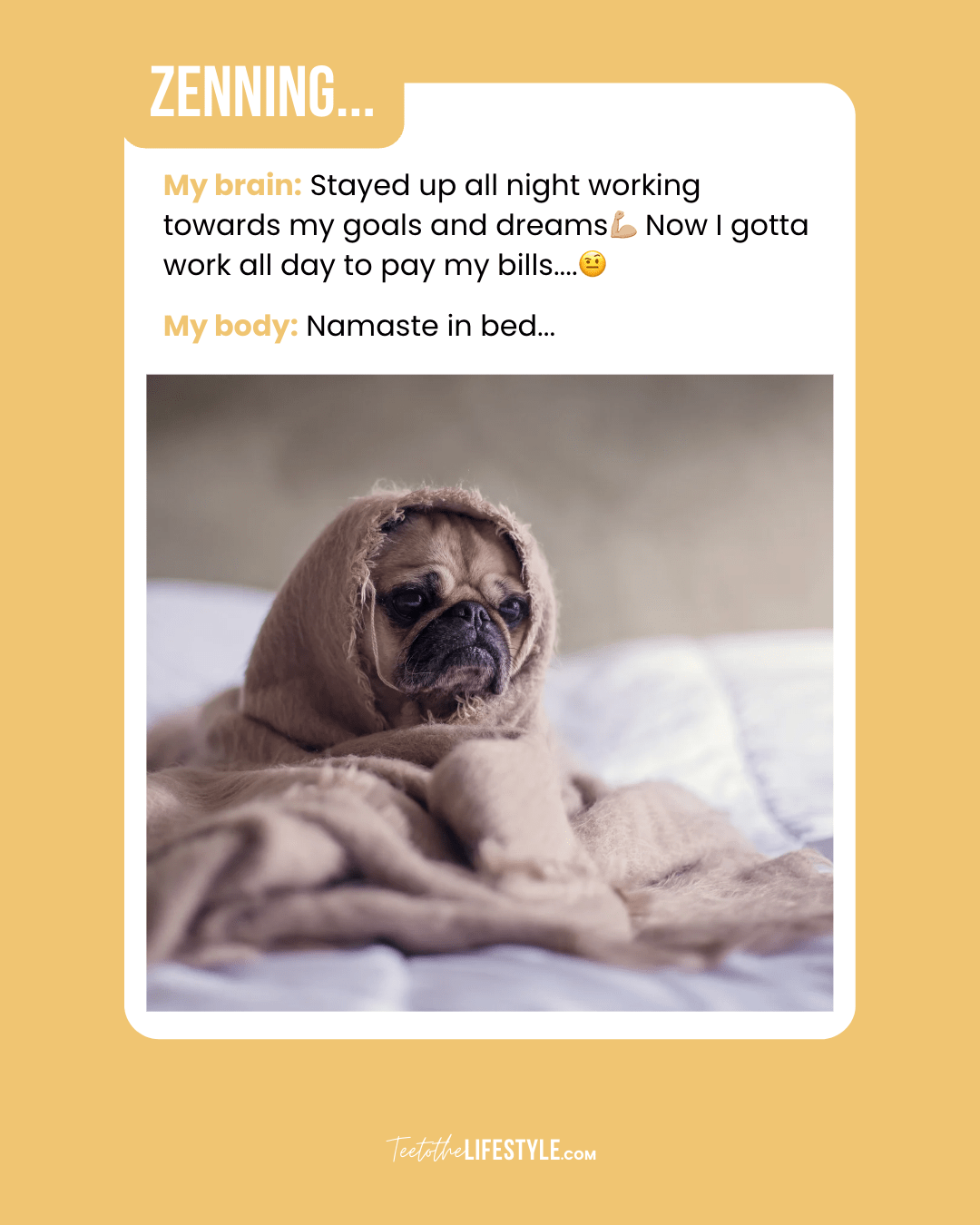Mindfulness Meditation: Step-by-step Guide For Beginners
If you are looking for an alternative way to decompress or get focused on your personal or professional goals, keep reading to learn about the many benefits I discovered from mindfulness meditation in this beginner-friendly step by step guide.
I recently started attending yoga class at my local gym almost 6 months ago and absolutely fell in love with how elated I felt after each class. Even my husband had never seen me quite this happy to go workout. Now this isn’t my first time taking a yoga class; even tried hot yoga which I highly recommend and prefer.
Nonetheless, becoming a yogi, I have found that meditation has heightened my self-awareness in mind, body and spirit allowing for more intrinsic energy to flow in and through me. Both yoga and meditation practices center around mindfulness with a focus on breathing and just being in the moment; and for me, it has helped me move with more intention and grace, something I struggled with over the years. So If you are looking for a sign you need meditation in your life, I provided some helpful tips from my experience to get you started in the right direction.
What is mindfulness meditation

There was once a time where I thought meditating was just about repeating cute mantras and affirmations; which is somewhat true but there is so much more it offers. In general, meditative practices allow for unrestricted energies to flow and induce feelings of serenity within the psyche. Some people do it to relax while others may practice to bring clarity and balance back into their conscious and sub-conscious being.
I have found when it comes to practicing mindfulness meditation, you are focusing your attention on your thoughts, feelings, and bodily sensations in the present moment. It has helped me embrace and accept where I am in my life becoming one with my infinite self in my life’s design. Yep, it’s just that deep!
5 beneficial reasons to meditate

Now that we have a better understanding of what mindfulness meditation is, I want to share some reason how meditation might be beneficial in your life. When I started meditating, I naturally assumed it was working without truly understanding why I was meditating or what I was expecting from practicing. I mean I felt more positive but there was no direct or indirect indication that I was achieving the expected result until I started reading WHEREVER YOU GO THERE YOU ARE by JON KABAT -ZINN.
JON KABAT -ZINN summarizes mindfulness as paying attention on purpose, in the present moment, and in nonjudgmental spirit. Doing so, brings you to a greater awareness and understanding of self and openness of the present moment. He further says that you have to take the expectation out of the “experience” because the “experience” is realized when you are just being, in the moment.
Meditation helps us wake up from this sleep of automaticity and unconsciousness, thereby making it possible for us to live our lives with access to the full spectrum of our conscious and unconscious possibilities.
JON KABAT -ZINN,
WHEREVER YOU GO, THERE YOU ARE
Allowing myself to be open to the experience of meditating, I have discovered the following reasons to be the most beneficial.
1. Meditation can help you to clear your mind and be present helping you increase your self-awareness.
2. It can help you to decompress and manage stress which can improve your overall health and well-being.
3. It can boost your concentration and focus, which is useful for things like tasking and creativity.
4. It can be a great way to relieve anxiety or stress disorders.
5. It’s a great way to connect with your inner thoughts and help reduce negative feelings and emotions.
What are the 5 stages of meditation?

There are definitely levels to this and I am still learning and growing with each stage. The five stages of meditation can be broken down into beginner, intermediate, and advanced levels with each level presenting its own challenges and rewards, so it’s important to find a style of meditation that works for you.
In beginner meditation, you might focus on your breath, an object or on a simple mantra (a word or phrase that you repeat to yourself). As you become more experienced, you might explore more complex forms of meditation, such as mindfulness, introspection or transcendental.
For beginners, you might follow the below stages of meditation.
1. Orientation: This stage includes preparatory activities like learning about meditation, setting aside time for practice and creating an environment in which you’re comfortable.
2. Engagement: In this stage, you learn how to control your breath and body. You begin to focus on your breath and body sensations. You may also start to notice thoughts and feelings come and go.
3. Concentration: When concentration is strong, you enter the meditative state. In this stage, all your attention is focused on your breath and nothing else. You may start to notice more detailed aspects of your experience, such as the sound of your breath or the feeling of your hands.
4. Insight: In this stage, you may start to see the thoughts and feelings that come and go as simply thoughts and feelings, without attaching any emotion or feeling to them or following them into a deeper thought path.
5. Transformation: After completing the meditation practice, you may continue practicing transformation to deepen your understanding of meditation. You can continue to explore the nuances of your experience in this way.
How do I start meditating?
We’ve talk about what meditation is and how mindfulness plays an important role in helping you become more self-aware and self-accepting. We’ve also talked about the benefits and the stages of meditation giving you a better understanding of how to apply this practice in your everyday life.
Now, you might be wondering, how do I actually start meditating. One thing I discovered when trying to learn how to meditate was the overwhelm of information that was available. However, one thing to keep in mind is there’s no one way to meditate successfully; it’s all about finding what works for you. Nonetheless, here are some guided steps to set your pace, place and space.
Before you start:
Set up your meditation place, space and pace. You should be intentional about this process as this is how you experience the full benefits. Find a quiet place a few minutes out of your day where and when you can be alone, a space where you will be comfortable sitting or laying and at a pace in which you want to practice whether that is for 5 minutes every other day or everyday for 10 minutes. You have complete control over your environmental design. It may be helpful to also set a timer for five or ten minutes.
- Find a comfortable place to sit, stand or even lie down. You want to be in state of relaxation but also observant. You can close your eyes or find a focal point. ( I like to light a candle to gaze at the flame.)Take slow deep breaths through your nose and let them out slowly through your mouth. Allow each part of your body to feel relaxed as air is inhaled and exhaled.
- Once you’ve calmed down completely, begin to focus on your breath. *The breath is the current connecting body and mind. Let it come and go naturally, without trying to control it. What sensations are you feeling throughout your body and being.
- When you become aware of your breathing, allow your thoughts to flow unrestricted through your mind. Acknowledge their presence but don’t define them as positive or negative. If you find yourself following the thought’s path try to reconnect your focus with your breathing.
- Now that you are in a full meditative state, bring awareness to positive feelings, thoughts and experiences in your life.
- when you’re ready, slowly open your eyes and come back to the present moment. You can stop there or you can incorporate a mantra, intention, affirmation or express words of gratitude.
My final tips for a successful practice of Mindfulness Meditation
To maximize the benefits of mindfulness meditation, try these tips for successful practice:
- Be open to change: If something feels uncomfortable during your practice, don’t be afraid to experiment with different techniques or settings.
- Set goals: When practicing mindfulness meditation, it can be helpful to set short-term and long-term goals. Short-term goals can help you focus on your breath and body while practicing, while long-term goals can encourage you to keep practicing even when I’m not feeling particularly good about my progress.
- Stress is inevitable in our daily life: However, when managed, it can have minimal control over your life. Mindset matters and if you change the way you think about stress, you can start to use it empower yourself when faced with triggers.
My Amazon Fave Yogi/ Meditation Starter Kit

It’s exciting to me whenever I feel like I’m experiencing a growth spurt and moving closer to carving out a happy, healthy and balanced lifestyle. To me it’s important to not only do the inner work but have to the tangibles in hand to keep me motivated on my journey.
I’ve put together my favorite aesthetically pleasing and functional yoga/meditation started kit to keep you motivated as well! It’s a must that I include my Attitude Of Gratitude journal as well so that you can release and reset your thoughts and emotions. Especially if you’ve been feeling bouts of stress triggering burnout. You can more on this topic by checking out my recent blog post where I share my 5 tips to avoid burnout a creativepreneur!












